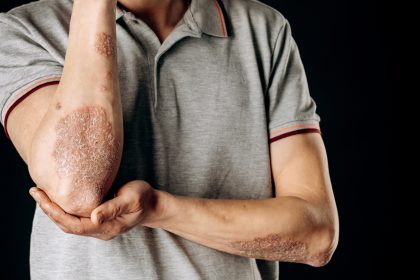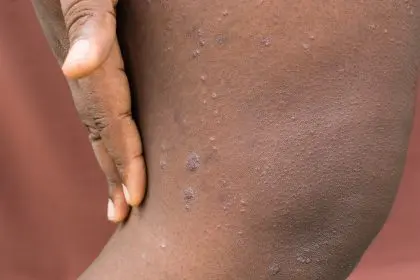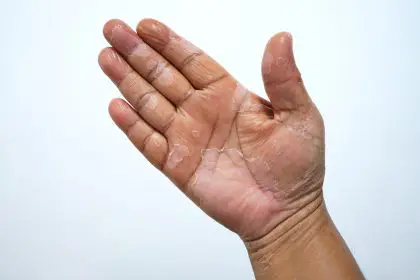Steroid use can lead to unexpected consequences. Imagine waking up one day to find your skin burning, red, and covered in painful bumps. For Jada Jones, a young aspiring actor from Charlotte, North Carolina, this nightmare became a reality. Her story sheds light on a little-known condition called Topical Steroid Withdrawal (TSW), a debilitating side effect of long-term steroid use that’s shaking up the dermatology world.
The double-edged sword of eczema treatment
Eczema, a chronic skin condition affecting millions worldwide, has long been treated with topical steroids. These medications offer quick relief from itching and inflammation, making them a go-to solution for both patients and doctors. However, as Jones discovered, prolonged use can lead to a host of unexpected and severe complications.
Unmasking topical steroid withdrawal
TSW occurs when the body becomes dependent on topical steroids, leading to a rebound effect when the medication is discontinued. Symptoms can include intense burning sensations, widespread redness, and skin that feels like it’s on fire. The International Topical Steroid Awareness Network (ITSAN) reports that TSW can persist for months or even years, significantly impacting patients’ quality of life.
The diagnostic dilemma
One of the most challenging aspects of TSW is its elusive nature. With no definitive tests available, diagnosis often relies on clinical observation and patient history. This ambiguity has led to debates within the medical community, with some experts preferring terms like Topical Steroid Addiction or Red Skin Syndrome.
Breaking free from the cycle
For Jones, the journey to healing began with a painful realization that her prescribed treatment was exacerbating her condition. After two years of suffering, she discovered alternative therapies that offered hope. Non-steroidal treatments like Tacrolimus and Pimecrolimus emerged as potential lifelines for those battling TSW.
The power of gentle care
Both Jones and fellow TSW survivor Kelly Barta emphasize the importance of a gentle skincare routine. They advocate for fragrance-free products that support the skin barrier, crucial for those with compromised skin. Some patients have even found relief in natural remedies, such as Dead Sea salt baths and ocean soaks.
A call for awareness and change
As awareness of TSW grows, so does the demand for research and improved treatment options. The UK’s Medicines and Healthcare Products Regulatory Agency has taken notice, issuing health advisories about the condition. This shift in attention from regulatory bodies signals a potential turning point in how the medical community approaches long-term steroid use.
Empowering patients in their healing journey
Experts now encourage patients to take an active role in their treatment plans. While topical steroids remain effective for many, it’s crucial to use them as directed and explore alternatives when necessary. Dermatologists emphasize the importance of open communication between patients and healthcare providers to ensure the best possible outcomes.
The road ahead: Hope and healing
Despite the challenges posed by TSW, stories like Jones’s and Barta’s offer hope to those navigating similar struggles. By sharing their experiences and advocating for change, they’re not only empowering themselves but also countless others facing this condition.
A new chapter in skincare
The emergence of TSW as a recognized condition marks a significant shift in our understanding of eczema treatment. It underscores the need for a more nuanced approach to skincare, one that considers the long-term effects of treatments alongside their immediate benefits.
Bridging the gap between patients and providers
As awareness of TSW grows, so does the need for improved communication between patients and healthcare providers. Dermatologists are beginning to recognize the importance of listening to patients’ concerns and being open to alternative treatment options when traditional methods fall short.
The role of social media in patient advocacy
Jones’s journey highlights the powerful role of social media in raising awareness about little-known medical conditions. With over 200,000 followers on TikTok, she’s created a platform for education and support, demonstrating the potential for digital communities to drive change in healthcare.
Looking to the future: Research and innovation
The growing recognition of TSW is spurring new research into alternative treatments for eczema and other inflammatory skin conditions. Biologic medications like Dupixent are showing promise, offering hope for those who have exhausted traditional treatment options.
A holistic approach to skin health
The TSW phenomenon is prompting a reevaluation of how we approach skin health. There’s a growing emphasis on treating the whole person, not just the symptoms, with considerations for diet, stress management, and environmental factors alongside medical interventions.
The importance of patient empowerment
Perhaps the most significant outcome of the TSW awareness movement is the empowerment of patients. Individuals like Jones and Barta are taking control of their health journeys, advocating for themselves, and inspiring others to do the same. This shift towards patient-centered care has the potential to revolutionize the treatment of chronic skin conditions.
As we continue to unravel the complexities of TSW and its impact on patients’ lives, one thing becomes clear: the path to healing is as much about awareness and advocacy as it is about medical treatment. By sharing their stories and pushing for change, individuals like Jones and Barta are not just reclaiming their own health – they’re paving the way for a more informed, compassionate approach to skincare for generations to come.
















